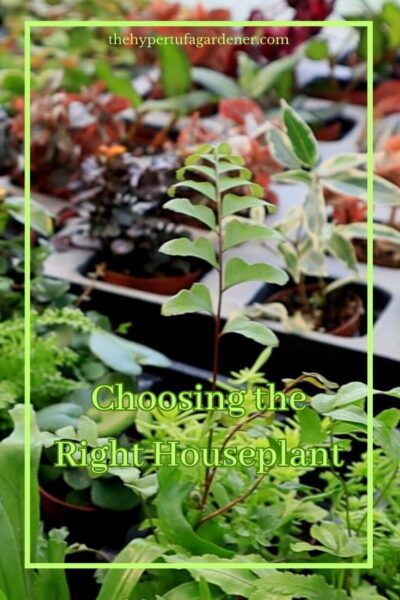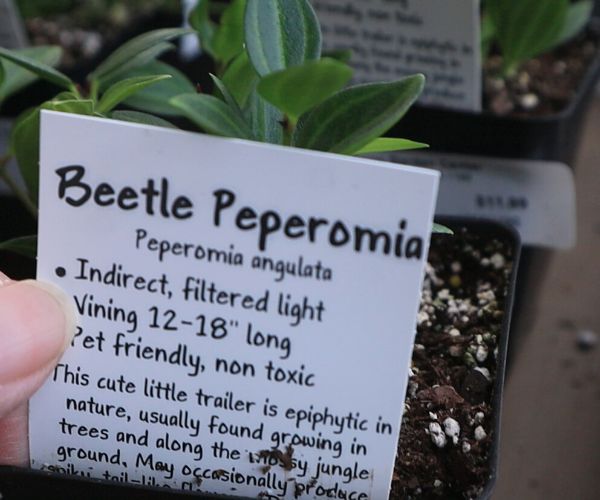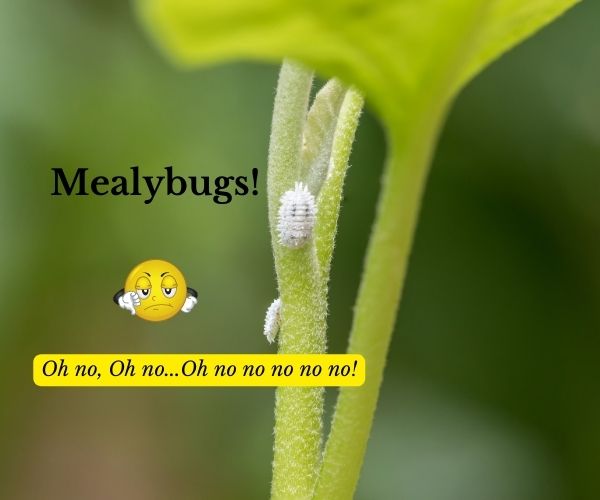How To Pick The Best Houseplant When Shopping
Houseplants not only add beauty and fresh air to your home, but they can also have a positive impact on your mental and physical health. My husband can testify to that!
But choosing the best houseplant in a nursery can be a daunting task, especially if you are a beginner. I can give you my advice on how to choose the best houseplant in a nursery, including ways to spot insects or insect damage.

Why Would I Want Houseplants?
Houseplants have numerous benefits, including:
- Purifying the air by removing harmful pollutants
- Boosting mood and reducing stress levels
- Increasing productivity and creativity
- Providing a natural and relaxing ambiance in the home
What Do I Consider When Choosing a Houseplant?
When choosing a houseplant, it’s essential to research requirements of the plant you plan to buy. Give it a quick look-up on your smart phone if it has an ID tag. Or use the Google image search to match up a plant.

Consider the following factors:
Light Requirements
Different houseplants require different levels of light, from low to bright. It’s crucial to choose a plant that matches the light conditions in your home. You can determine the light level by observing the amount of natural light in the room and selecting a plant that fits.
For instance: I consider this plant to be in bright indirect light because it casts a sharp shadow on the wall behind it.

The amount of light your home receives can vary depending on the location and orientation of your windows, as well as the time of day and season. Some rooms in your home may receive more sunlight than others, while some may be completely shaded throughout the day.
Watering Requirements
The amount of water a houseplant needs depends on the species and the environment. Some plants require frequent watering, while others require less. Over-watering can lead to root rot, and under-watering can cause the plant to wilt and die. It’s essential to choose a plant that matches your watering routine.
Read about the plant you are checking over. Likes moist soil? Wants to dry out between watering? Always rely on your finger stuck into the soil and/or a Moisture Tester.
Size and Growth Habit
Consider the size of the plant and its growth habit before buying. Do you have a place it will fit near a light source? A large plant may not fit in a small space, and a trailing plant may not be suitable for a high shelf {or for curious cats).

Soil Type (see watering requirements also)
Different houseplants require different types of soil. Some plants require well-draining soil, while others prefer a moist environment. Ensure that the soil type matches the plant’s requirements.
Pests and Diseases
It’s essential to inspect the plant for signs of pests and diseases before purchasing. Look out for insect damage, yellowing leaves, and brown spots, which may indicate a problem. It’s best to choose a healthy plant to avoid spreading pests and diseases to other plants in your home.
Best practice when you bring a new plant home is to keep it away from your other plants for a week or two so that you can observe it and re-inspect it many times before it joins the others.

What Damage Should You Look For?
Insect damage is a common problem in houseplants. It’s essential to check for the following signs of insect damage before purchasing a plant:
Leaf Damage
Insects such as spider mites, thrips, and mealybugs can cause leaf damage by piercing the leaves and sucking out the plant’s sap. This can lead to stunted growth, yellowing, and wilting of leaves.

Stem Damage
Insects such as scale insects and mealybugs can damage the stem of the plant by piercing it and feeding on the sap. This can cause the stem to become weak and eventually break.
Root Damage
Insects such as root mealybugs and fungus gnats can damage the roots of the plant by feeding on them. This can lead to stunted growth, wilting, and root rot. As a shopper, you should be able to gently tug the plant out of its pot to look at the roots.
What Should I Avoid When Choosing A Houseplant?
It’s essential to avoid the following when choosing a houseplant:
- Purchasing a plant that is too large for your space
- Choosing a plant that requires a lot of maintenance if you don’t have the time
- Buying a plant that requires a lot of sunlight if your home doesn’t have enough natural light
- Choosing a plant without inspecting it for signs of insect damage or disease

Choosing the best houseplant in a nursery requires considering various factors such as light requirements, watering needs, size, growth habit, soil type, and insect damage. Inspecting the plant for signs of pests and diseases is essential to avoid spreading them to other plants in your home. With these tips, you can choose a healthy and beautiful houseplant that will thrive

What Might I See On A Leaf That Should Concern Me?
A damaged leaf on a houseplant may indicate the presence of insect damage. Insects such as spider mites, thrips, and mealybugs can cause leaf damage by piercing the leaves and sucking out the plant’s sap. This can lead to stunted growth, yellowing, and wilting of leaves.

If you notice brown spots or discoloration on the leaves, it may indicate the presence of leaf miners or other insects that feed on the leaf tissue. Leaf miners are small insects that lay their eggs inside the leaf, and the larvae tunnel through the leaf tissue, leaving a trail of damage.
In addition to physical damage, insect infestations can also cause other symptoms such as distorted growth, wilting, and curling of leaves. It’s important to inspect the plant thoroughly for signs of insect damage before purchasing to avoid spreading pests to other plants in your home.

Most of All – Have Fun Shopping For HousePlants
If you are new to houseplants, it can be so much fun. This article is just to help you get off to a good start.
If you are a seasoned houseplant guru, let me know if you have any more good advice for any of us. We are all houseplant lovers and want everyone to have success. Happy Houseplanting!


